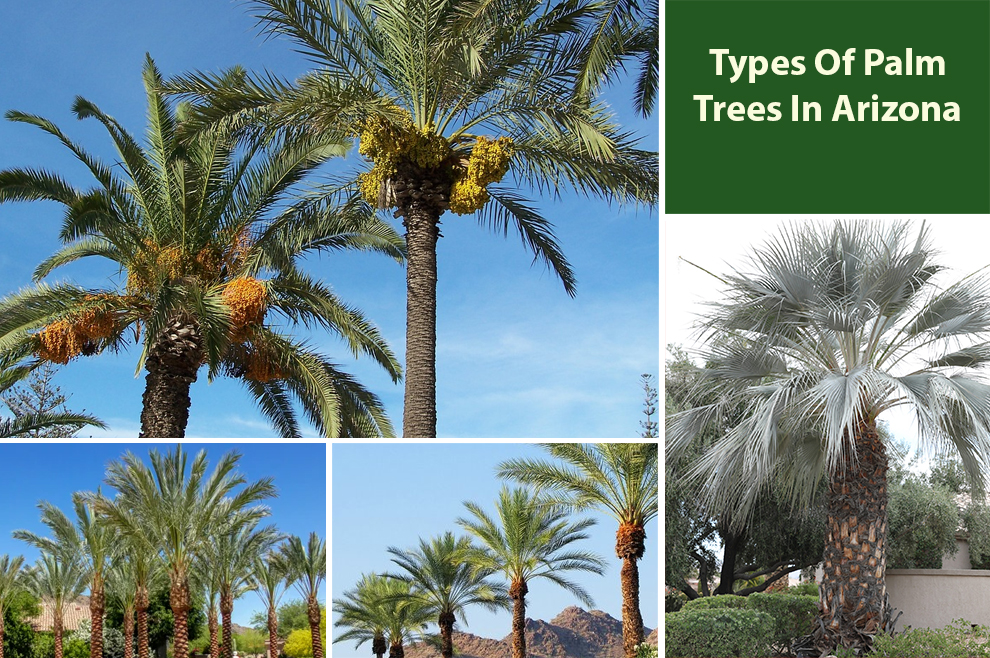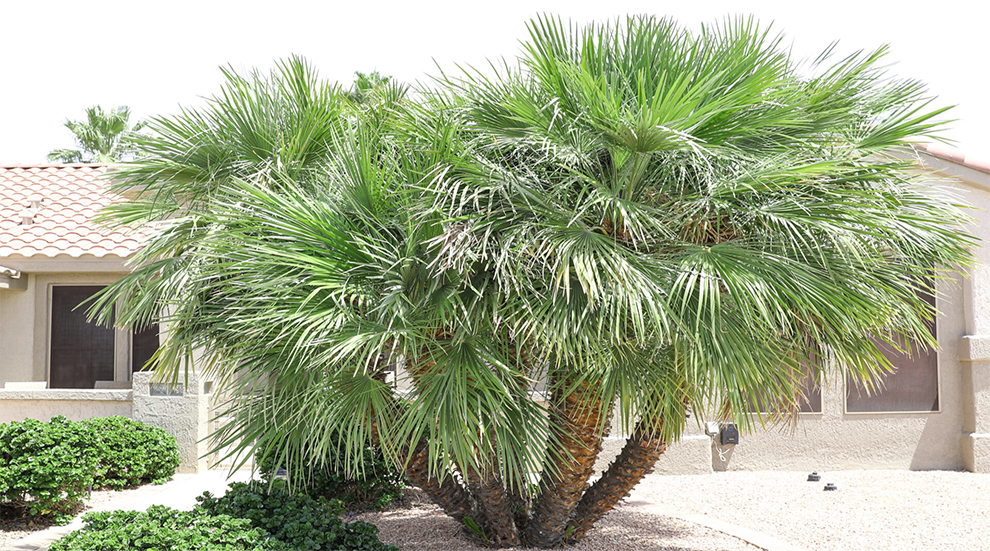Arizona Palm Trees (Native, Non-Native Best Ones)
Learn about the commonly found palm trees in Arizona. Arizona is home to Mexican Fan Palm, Pygmy Palm, Pindo Palm, California Palm, Date Palm, etc. However, only the Mexican variety is said to be the native one.

“Discover the Diversity of Palm Trees in Arizona: From Desert Jewels to Tropical Marvels.
Arizona is a place where lush greenery thrives amidst the rugged desert landscape. Arizona boasts a surprising array of palm species, each displaying its unique characteristics and allure.
When it comes to Arizona palm trees, you have in place the hardy and iconic Mexican Fan Palm to the graceful and statuesque California Fan Palm. These botanical wonders have carved their niche in this arid region.
Amidst the shimmering heat, date palms offer a sweet oasis with their succulent fruit, while Mediterranean-inspired Canary Island Date Palms add a touch of elegance to urban settings.
Join us as we explore the fascinating world of Arizona’s palm trees, uncovering their diverse origins, exceptional adaptability, and the enduring charm they bring to this desert paradise.”
Which Are The Palm Trees Native To Arizona?
The only palm tree native to Arizona is the California Fan Palm (Washingtonia filifera).
Please note that the presence and abundance of these palm trees may vary in different regions of Arizona, depending on factors such as climate, water availability, and human landscaping choices.
Different Types of Palm Trees Arizona Has Thriving!
| Palm Tree | Scientific Name | Main Characteristics |
| Mexican Fan Palm | Washingtonia robusta | – Tall and slender with a single, smooth trunk
|
| – Feathery green leaves with drooping leaflets | ||
| California Fan Palm | Washingtonia filifera | – Taller than Mexican Fan Palm, with a thicker trunk |
| – Gray-green fan-shaped leaves | ||
| Date Palm | Phoenix dactylifera | – Medium to tall with a single, thick trunk |
| – Pinnate leaves with spines on petioles; produces sweet, edible dates | ||
| Canary Island Date | Phoenix canariensis | – Stout trunk with a dense canopy of arching, pinnate leaves |
| – Larger and more robust compared to other Phoenix species; no spines on petioles | ||
| Pygmy Date Palm | Phoenix roebelenii | – Small to medium-sized, often used in landscaping |
| – Fine-textured, pinnate leaves with small, sharp spines | ||
| Mediterranean Fan Palm | Chamaerops humilis | – Low-growing, clumping palm |
| – Fan-shaped leaves with spines on petioles; can tolerate colder temperatures | ||
| Pindo Palm | Butia capitata | – Medium-sized with a stout trunk |
| – Silvery-blue to green, arching pinnate leaves; produces edible orange-yellow fruits | ||
| Windmill Palm | Trachycarpus fortunei | – Cold-hardy, tolerates colder temperatures than many other palms |
| Mexican Blue Palm | Brahea armata | – Medium-sized with a bluish-gray hue to the leaves |
| – Pinnate leaves with spines on petioles; a slow-growing palm | ||
| Bismarck Palm | Bismarckia nobilis | – Large and striking, with a silvery-blue color to the leaves |
| – Circular, fan-shaped leaves; a slow-growing palm | ||
| Senegal Date Palm | Phoenix reclinata | – Medium-sized with multiple trunks in a clumping form |
| – Pinnate leaves with spines on petioles; drought-tolerant and suitable for landscaping | ||
| Foxtail Palm | Wodyetia bifurcata | – Medium-sized, slender trunk with a crown of arching, feathery leaves |
| – Bright green leaves resemble a foxtail; a tropical palm that can thrive in warmer climates |
You might also like: San Diego Palm Trees | Types of Palm Trees in Miami | South Carolina Palm Trees| Alabama Palm Trees| Florida Palm Trees | Palm Trees in Australia | Brisbane Palm Trees
Famous Arizona Palm Trees In Detail
Some of the most common palm trees commonly found in Arizona are:
Mexican Fan Palm (Washingtonia robusta)
Mexican fan palms are the only native palm trees in Arizona. Tall and slender with feathery green leaves, this iconic palm is found gracing the Arizona landscape with its elegant appearance.
It prefers full sun and well-draining soil. This palm is highly adaptable to Arizona’s arid climate, tolerating drought and heat. It grows quickly in its early stages but may need occasional watering in hotter months.
Related: Fan Palm Tree Varieties
California Fan Palm (Washingtonia filifera)
Distinguished by its gray-green fan-shaped leaves, this palm towers over its Mexican counterpart, adding a touch of elegance to the desert scenery.
Thrives in full sun and well-draining soil, this palm is drought-tolerant and can withstand hot temperatures. It grows rapidly when provided with regular watering during its early years but becomes hardier as it matures.
Date Palm (Phoenix dactylifera)
With a stout trunk and pinnate leaves bearing spines, this medium to tall palm not only adds beauty but also produces delicious, sweet dates.
Flourishing in hot, arid environments, it demands full sun and well-drained soil. Date palms are drought-tolerant once established. They thrive on low-maintenance but benefit from occasional watering.
Canary Island Date Palm (Phoenix canariensis)
Robust and arching, its dense canopy of pinnate leaves lacks spines, making it an attractive choice for urban landscapes.
It prefers full sun and well-draining soil, excelling in hot, dry climates. Drought-tolerant when mature, it requires regular watering in its early years.
Adaptable to different soil types, it is commonly used in urban landscapes, streetscapes, and gardens in Arizona.
Pygmy Date Palm (Phoenix roebelenii)
A small to medium-sized palm, its fine-textured pinnate leaves and sharp spines give it a distinctive character, often used in landscaping.
Suitable for full sun to partial shade, it thrives in well-drained soil and can tolerate drought once established.
This smaller palm is ideal for container gardening or planting in limited spaces, making it popular for patios and small gardens.
Mediterranean Fan Palm (Chamaerops humilis)

A low-growing, clumping palm with fan-shaped leaves and petioles adorned with spines, well-suited to withstand colder temperatures. It is among the best palm trees for Arizona.
Adaptable to various soil types, it prefers full sun but can tolerate partial shade.
Cold-tolerant and suitable for both warm and cooler regions, it appreciates well-draining soil and regular watering during its establishment period.
Pindo Palm (Butia capitata)
Featuring silvery-blue to green arching pinnate leaves and edible orange-yellow fruits, this medium-sized palm adds charm to the desert scenery.
It thrives in full sun and well-draining soil. This palm is drought-tolerant once established.
Adaptable to various soil types, it benefits from occasional watering in extreme heat. It can withstand lower temperatures than many other palms, making it suitable for both warm and cooler regions.
Windmill Palm (Trachycarpus fortunei)
Cold-hardy with dark green, fan-shaped leaves and a hairy appearance on the trunk, it endures cooler temperatures compared to other palms.
Preferring partial shade to full sun, it thrives in well-draining soil and can tolerate both drought and cold temperatures.
One of the few palms that endure freezing temperatures, it is an excellent choice for higher elevations and cooler regions in Arizona.
Related: How To Grow Windmill Palm
Mexican Blue Palm (Brahea armata)
Displaying bluish-gray leaves and slow growth, this medium-sized palm showcases a distinctive hue that sets it apart in the landscape.
It flourishes in full sun and well-drained soil, this slow-growing palm prefers arid conditions and is drought-tolerant once established.
It can endure frost and cold temperatures, making it suitable for various regions in Arizona.
Bismarck Palm (Bismarckia nobilis)
A large and striking palm with silvery-blue circular fan-shaped leaves, it adds a touch of grandeur to any setting.
Adaptable to different soil types, it prefers full sun and well-draining soil. It thrives in warm regions of Arizona and can tolerate low humidity.
Related: How to Grow Bismarck Palm
Senegal Date Palm (Phoenix reclinata)
Medium-sized and clumping with pinnate leaves bearing spines, it’s well-adapted to drought and serves as an excellent landscaping choice.
Preferring full sun and well-draining soil, it is drought-tolerant once mature but requires regular watering during its establishment period. It can tolerate different soil types and is suitable for landscaping in arid regions.
Foxtail Palm (Wodyetia bifurcata)
Slender trunk and a crown of arching, feathery bright green leaves give this tropical palm its foxtail-like appearance, thriving in warmer climates.
Flourishing in full sun to partial shade and well-draining soil, it appreciates regular watering during its establishment period.
Related: Palm Tree Growth Rate | Palm Tree Lifespan | Different Types of Palm Trees
What Is The Fastest Growing Palm Tree In Arizona?
The fastest-growing palm tree in Arizona is the Mexican Fan Palm (Washingtonia robusta). It has a rapid growth rate, especially in its early years, and can reach impressive heights within a relatively short time.
What Is The Most Common Palm Tree In Arizona?
The most common Arizona palm trees are the Mexican Fan Palms (Washingtonia robusta). They are widely planted in urban and residential areas, along streets, and in parks due to their adaptability to the arid climate and striking appearance.
Which Is The Best Time To Plant Palm Trees In Arizona?
The best time to plant palm trees in Arizona is during the warm season, typically in the spring or early fall.
Planting during these times allows the palm trees to establish their root systems before the extreme heat of summer or potential frost during winter.
Are Palm Trees Invasive In Arizona?
Some palm trees can be considered invasive in Arizona, especially the Mexican Fan Palm (Washingtonia robusta) and the California Fan Palm (Washingtonia filifera).
These palms can spread prolifically, self-seeding and taking over natural areas, outcompeting native vegetation. It is essential to be mindful of their growth and take appropriate measures to prevent their spread in ecologically sensitive regions.
